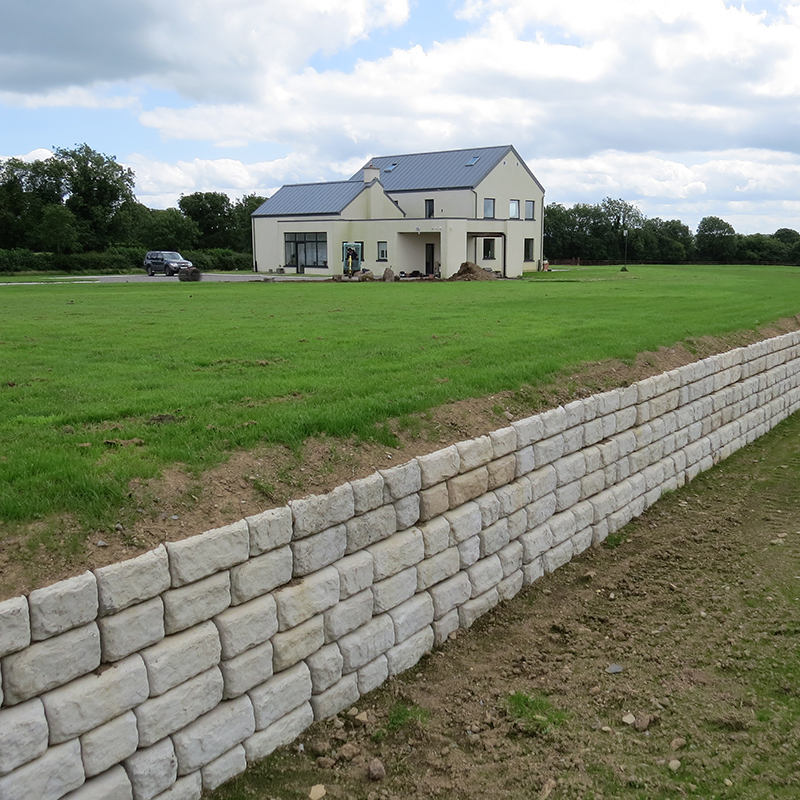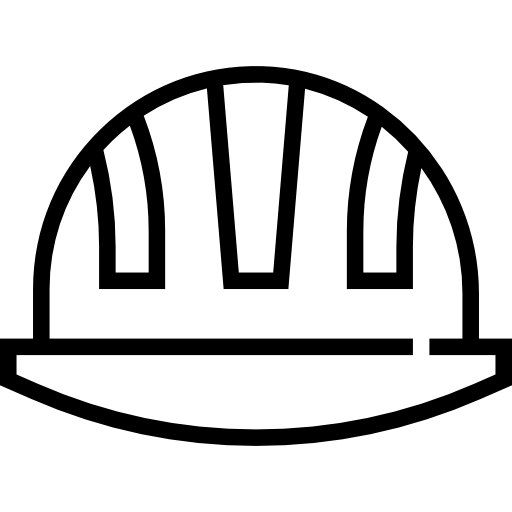In many ways the Ha-ha wall can be described as the hidden gem of architectural landscaping, similar to the modern-day Infinity Pool. Their initial use in the UK and Ireland was championed by the 18th century landscape architect Capability Brown, who recognised their use in providing houses with this feature. The unique aspect of the Ha-ha wall is that it is sunken and therefore not visible from the house side. The base of the wall is about 1.5 metres below the natural field level and gradually slopes upwards for about 5 metres to seamlessly reach the finished field height. Livestock, therefore, approaching the wall from the field side have to descend the gradual slope to find themselves at the base. On the other hand, from the house side there is no sight whatsoever of the construction, allowing an unspoilt view of the surrounding countryside.
Thus from a practical sense, Ha-ha walls act to keep cattle and sheep out of the formal gardens, without the need for obtrusive fencing.

Fast forward three centuries, this remarkable landscaping feature has made a stunning appearance in Co Meath, following the completion of the M3 motorway. Evan Newell, the man behind the project, takes up the story:
“We had traditionally farmed 200 acres outside the village of Dunshaughlin. The construction of the new motorway meant that we lost 40-acres however the compensation available allowed us to secure an equivalent land area located on the opposite side of the motorway.”
He continued:
“But every cloud has a silver lining as our new state of affairs gave us the opportunity to build a new house, farmyard and ancillary buildings on the recently acquired property.”
Construction subsequently began on what Evan describes as a ‘passive’ house, designed to meet the most stringent environmental standards as well as being totally energy efficient. The property extends to 4,500 square feet.
“As the development of the house progressed, we wanted to ensure that an uninterrupted view of the surrounding countryside was maintained. This was the overarching factor in deciding to build a Ha-ha retaining wall.
There are two acres of lawn around the new house, which sits on a slope. We wanted the wall not only to work from an aesthetic perspective, but also as a barrier to our thoroughbred horses that would be grazing in the adjacent fields.”
The wall extends to some 200 metres in length and is 1.5 metres in height. There is an additional capping of about 15 cm of grass planted soil and this effectively provides a much more solid barrier that is significantly in excess of a standard post and railing stud farm fence that contains stock grazing land adjacent to the lawn.
“We looked at a number of construction options,” Evan confirmed.
“However, after a visit to Balmoral Show last year, I became aware of the Redi-Rock retaining wall system, manufactured by Moore Concrete. It stood out as the immediate solution.”
Redi-Rock walls comprise of a series of one tonne interlocking blocks capable of creating an instant retaining wall system that is versatile enough to achieve high structures without compromising strength.
The precast concrete units have a natural effect cobblestone appearance which creates an attractive finish. As was the case in this construction, the top block is custom designed to allow planting.
Evan Newell again
“Construction began in April this year.”
“Initially, it was a case of digging down and then adding a 6-inch covering of hardcore gravel. There was no need to put in traditional foundations as all we needed was a level surface as a base to build the wall.
The actual construction process could not have been any more straightforward. It was just like putting blocks of Lego in place.
The wall itself was completed in four days. In contrast, it took a full four weeks to complete the accompanying earth works.”
Evan concluded:
“Six months after the wall was completed, we had it fully checked over. The wall hasn’t moved a jot and it’s hardly likely to now!”
“Redi-Rock is an amazing system. It was the perfect option when it came to making the Ha-ha wall a reality.”
Evan Newell